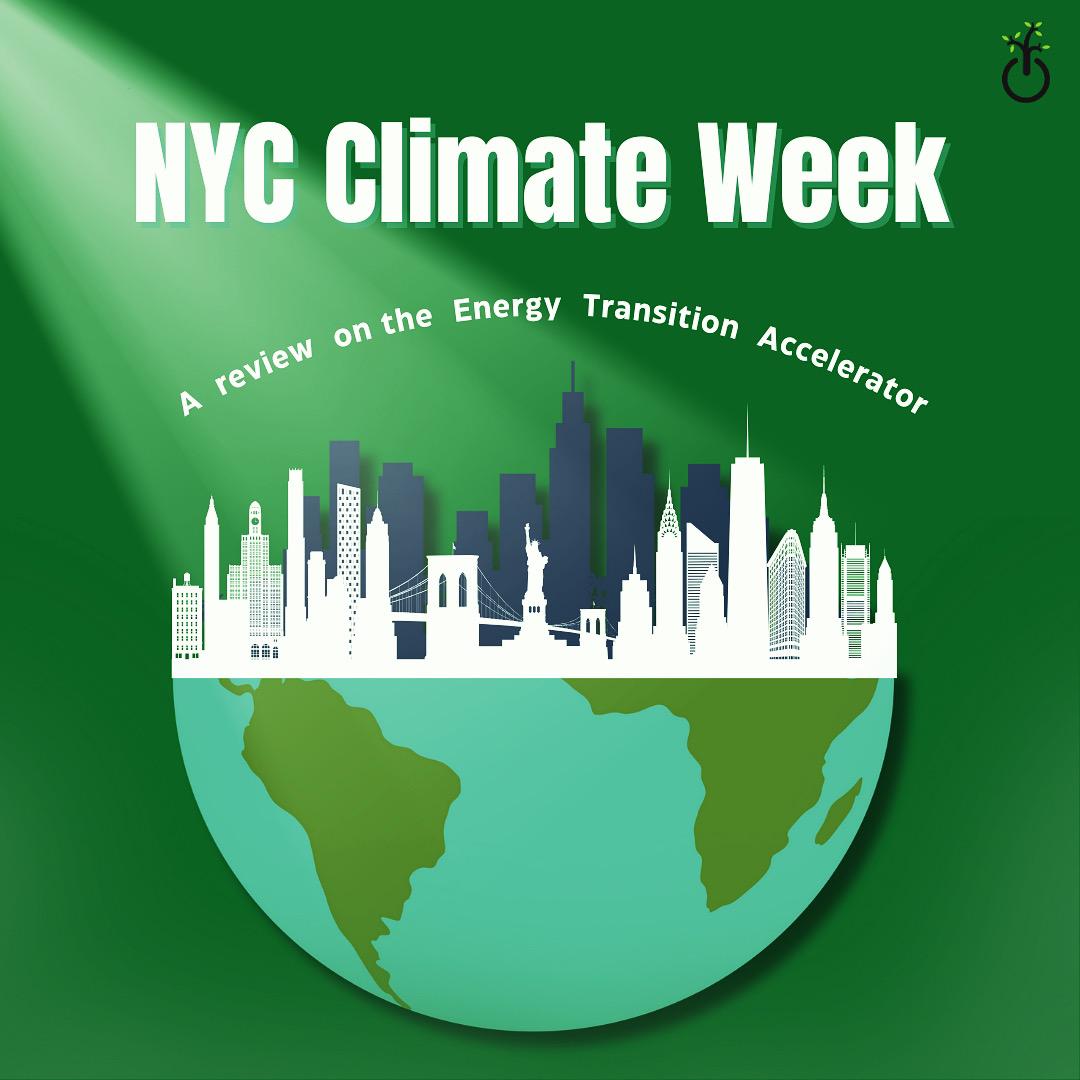The NYC Climate Week, held from September 22nd to 29th, brought together businesses and global leaders to discuss pressing climate challenges. One of the key topics this year focused on the environmental impact of the rapid growth of data centers and AI technologies, which require vast amounts of energy. Since 2020, investments in these areas have soared, leading to concerns about energy supply shortages and rising CO2 emissions. As countries work towards meeting the goals of the 2015 Paris Agreement, including the US’s aim for net-zero emissions by 2050, balancing technological advancement with sustainable energy solutions has become a crucial issue. This article explores these challenges and the potential role of carbon credits and government policies in addressing them.
First, to understand the challenges many countries are going to face, we must circle back to the Paris Agreement of 2015. The adopting countries all agreed to cut greenhouse emissions which are a major cause of global warming. Some countries, also set targets to reach along the way to a net-zero emissions, which for the US should be possible from 2050. The rapid growth of data centers and the advancement in AI technologies pose serious threats to these targets, as they require increasing amounts of energy that countries are struggling to supply.
During the many events at the NYC Climate Week, many tech groups gathered to discuss how to efficiently approach the issue, and they all expressed their interest in supporting the carbon credit scheme, also called Energy Transition Accelerators (ETA), theorized by former US climate envoy Jerry Kerry in 2022. Before Kerry’s scheme, the programme only awarded the government and its agencies a minor role in the growing carbon credits and offsets markets. In fact, the government could only regulate the amount of emissions a firm could produce, but its work stopped there. Subsequently, companies would start to manage these permissions just like securities, meaning the companies would price them and exchange them in the carbon credits market. Instead, from 2022, the state bodies and other government agencies started playing a much more central role. The latters receive carbon credits when they lower their sector’s emissions, and substitute for renewable energy. Once these carbon credits are awarded, the agencies are then able to sell them to companies, in order to finance their transition towards renewable energy.
As a result of Google’s 48% increase in last 5 year period’s emissions due to the expansions of its data centers, together with the growing economic pressures governments are facing, the subject of supporting the ETA has progressively acquired urgency. Nevertheless, Kerry believes that his scheme might not be sufficient, and encourages the firms and state agencies to directly limit their emissions.
Even if that is the case, however, it appears that the US is currently not ready to satisfy the soaring demand for energy, nor will it be in the immediate future. For the past two decades, in fact, the US power supply has been stagnating, and signs of some non-negligible improvements are not to be expected before 2028. Furthermore, the lack of an international grid infrastructure will not allow for energy, especially renewable energy, to be easily created and exchanged, therefore contributing to the swell of production and trade costs.
While countries like China are ready to invest vast sums of money towards their shift away from coal power towards renewable energy (China’s budget is around $800bn), other countries like the US are not yet ready for such a radical change. Many believe that the $370bn green subsidies granted by the Biden administration through its Inflation Reduction Act are going to be enough to reach the net zero target in 2050. Big tech firms do not seem to agree, as Microsoft is set to reopen the Three Mile Island nuclear power plant in Pennsylvania. Also, the S&P Global Commodity Insights has revised its expectations regarding coal plant shutdowns by 40% by the end of the decade, even taking into account the increase in renewable energy production.
Nevertheless, the US has no shortage in production of renewable energy. In fact, 1.5 terawatts of energy capacity are waiting to be connected to the grid power. The issue instead, stands with projects that ended last year, as they will be subject to a five year delay before being connected to the main grid. Such time constraints might prevent the government from supplying the required energy amount, other than accomplishing its net zero goal target before 2050.
In conclusion, while advancements in AI and data centers continue to drive economic growth, they also pose significant threats to global climate goals due to their increasing energy demands. The US faces considerable challenges in balancing this growth with its commitment to reducing emissions and transitioning to renewable energy. While initiatives like carbon credits and the Inflation Reduction Act offer some hope, long-term solutions will depend on improving energy efficiency in technology and accelerating the development of renewable energy infrastructure. The road to achieving net-zero emissions by 2050 will require not only financial investments but also strategic shifts in both government policy and corporate responsibility.
By Riccardo Pinna and Anastasia Binando
Sources:
https://www.ft.com/content/533a031a-29d0-434a-b6e0-daadf2ff3add
https://www.ft.com/content/03ecd17c-ccd3-4ba7-9619-9fcd7f00332f
https://carboncredits.com/the-ultimate-guide-to-understanding-carbon-credits
https://www.msci.com/www/blog-posts/key-takeaways-from-msci-s/04991186351




